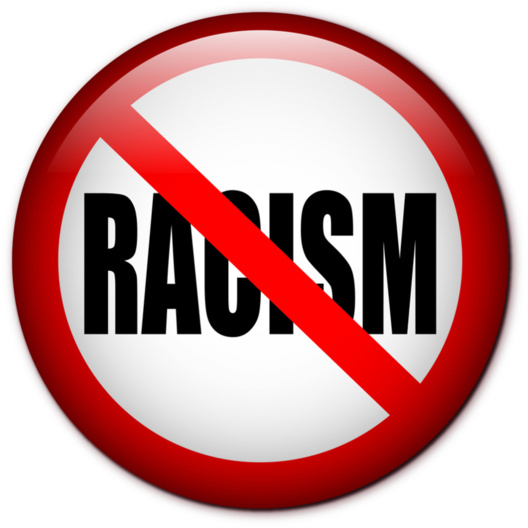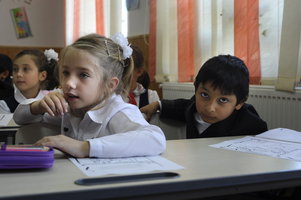By Christopher O. de Andrés

(November 2010)
All across Europe, the Roma and the Jews have historically been the two minorities who have suffered most from discrimination on grounds of their supposed “inferiority” and subsequent negative stereotyping. An estimated 600.000 to 1,5 million Roma were exterminated during the Holocaust: as a percentage, that makes Roma the ethnic group most affected by the Nazi killings. Both suffered under the communist regimes in Europe but Roma still experience discrimination, hatred and prejudice while anti-Semitism is nowadays, fortunately, condemned at all levels. Nevertheless, anti-Gypsyism is not even recognised as an existent phenomenon in society and therefore condemned. The problem is that stereotypes and prejudices against Roma, and thus anti-Gypsyism, are so deeply rooted in European culture that they are not perceived as such. “Dehumanization and reducing the Roma to their ‘Gypsyness’ are core elements of anti-Gypsyism. And this dehumanization appears to justify the majority’s abusive behaviour of Roma who are perceived not as individuals but merely as ‘Gypsies’.”
Thomas Hammarberg, the Council of Europe’s Commissioner for Human Rights has recently published a ‘comment’/article denouncing school segregation and the substandard education provided for Roma children in many countries around Europe. Segregation of this kids takes many forms such as assigning them to ‘special school’ for pupils with mental disabilities; being taught in separate classes with ‘B’ educational level or simply being denied enrolment. Decisions by the European Court of Human Rights concerning cases in Greece, the Czech Republic and Croatia reaffirm the right of Roma children to be treated as their non-Roma counterparts.
All across Europe, the Roma and the Jews have historically been the two minorities who have suffered most from discrimination on grounds of their supposed “inferiority” and subsequent negative stereotyping. An estimated 600.000 to 1,5 million Roma were exterminated during the Holocaust: as a percentage, that makes Roma the ethnic group most affected by the Nazi killings. Both suffered under the communist regimes in Europe but Roma still experience discrimination, hatred and prejudice while anti-Semitism is nowadays, fortunately, condemned at all levels. Nevertheless, anti-Gypsyism is not even recognised as an existent phenomenon in society and therefore condemned. The problem is that stereotypes and prejudices against Roma, and thus anti-Gypsyism, are so deeply rooted in European culture that they are not perceived as such. “Dehumanization and reducing the Roma to their ‘Gypsyness’ are core elements of anti-Gypsyism. And this dehumanization appears to justify the majority’s abusive behaviour of Roma who are perceived not as individuals but merely as ‘Gypsies’.”
Thomas Hammarberg, the Council of Europe’s Commissioner for Human Rights has recently published a ‘comment’/article denouncing school segregation and the substandard education provided for Roma children in many countries around Europe. Segregation of this kids takes many forms such as assigning them to ‘special school’ for pupils with mental disabilities; being taught in separate classes with ‘B’ educational level or simply being denied enrolment. Decisions by the European Court of Human Rights concerning cases in Greece, the Czech Republic and Croatia reaffirm the right of Roma children to be treated as their non-Roma counterparts.

Photo: Roma children at school, Western Balkans, wordpress
Strasbourg judgements is a good way of letting diversity thrive by binding civil legal obligations which will pave the way by helping shape new attitudes. The European Commission against Racism and Intolerance (ECRI) monitors phenomena of racism and racial discrimination. On June 2010 it published a report on the Former Yugoslav Republic of Macedonia urging the authorities to tackle the issue of ethnic segregation (i.e. to end any practice of improperly sending Roma children to educational facilities for pupils with metal disabilities...) and to integrate the children in mainstream schools. Beyond this and what I consider most relevant, plurilingual teaching at all levels is fostered and extracurricular activities promoting contact, mixing and interaction between children of different linguistic and ethnic backgrounds. It also recommends to implement pedagogic methods promoting critical thinking by students and providing them with the necessary tools to react to stereotypes, prejudices and intolerance. Media could also be a very valuable tool of awareness raising and promotion of diversity and multiculturalism, if really committed to change. Instead of focusing on negative headlines about Roma, emphasis should be put on finding fresh new stories with a positive impact which give the Roma community a voice in our diversified European society.
Europe is a complex organism with a complex fabric and many parts: its diversity of languages, traditions, and cultures is integral to its identity, strength and stability. Migration cross-fertilises Europe. Furthermore, the Roma citizens form a group of about 10 million people which can be found in almost all Council of Europe member states; in some Central and Eastern European countries they represent over 5% of their population. Roma culture is a rightful part of the European cultural heritage: it has always contributed to the enrichment of the European societies. And it is about time we recognise their contribution by giving them a voice, their own voice. The Council of Europe believes that majority and minority communities in every society must enjoy the same rights and should be equal before the law. With the right to preserve and develop their identity, language, culture; to safeguard their religion and tradition and voice their opinions (ref. Convention for the Protection of National Minorities). However, in order to have a voice they must have first humane dignity, which means being treated as human beings before society and before the law. Lastly, if each one of us, as European citizens, are truly committed to stand firm for social justice and be aware of the existence of the ‘anti-Gypsyism’, this will help us to overcome the never-ending conflict of current stereotypes and prejudices to make the positive change happen.
Europe is a complex organism with a complex fabric and many parts: its diversity of languages, traditions, and cultures is integral to its identity, strength and stability. Migration cross-fertilises Europe. Furthermore, the Roma citizens form a group of about 10 million people which can be found in almost all Council of Europe member states; in some Central and Eastern European countries they represent over 5% of their population. Roma culture is a rightful part of the European cultural heritage: it has always contributed to the enrichment of the European societies. And it is about time we recognise their contribution by giving them a voice, their own voice. The Council of Europe believes that majority and minority communities in every society must enjoy the same rights and should be equal before the law. With the right to preserve and develop their identity, language, culture; to safeguard their religion and tradition and voice their opinions (ref. Convention for the Protection of National Minorities). However, in order to have a voice they must have first humane dignity, which means being treated as human beings before society and before the law. Lastly, if each one of us, as European citizens, are truly committed to stand firm for social justice and be aware of the existence of the ‘anti-Gypsyism’, this will help us to overcome the never-ending conflict of current stereotypes and prejudices to make the positive change happen.
Tags :
‘anti-Gypsyism’
anti-Semitism
CoE's Commissioner for HR
Cybercrime
ECRI
EU Convention of Human Rights
Human Rights
Intolerance
Racism
The Council of Europe
the Jews
the Roma children
Thomas Hammarberg
Posted by Christopher Oscar de Andrés, on Tuesday, March 1st 2011 at 08:05
|
Comments (0)
Category
Recent posts
Archives
#Team Management #Gestión de Equipo International Business Development #Gestión de Equipo Comercial
5 MISSION AREAS IN HORIZON EUROPE
Acceso universal al tratamiento del sida
ACNUR
actor Pepe Sancho
ADHESIÓN DE CROACIA A LA UE
advertising / teleshopping spots
Africa
Alianza Atlántica
Alianza del Pacífico
Alibaba
Alibaba Group Holding Ltd.
AlipayApp
Amnistía Internacional
Ana Pastor
AnálisisyGestiónInteligenteDeDatos
Angela Merkel
Banco Central Europeo (BCE)
Banco Mundial
Barack Obama
batalla del sector del taxi y VTC
Benjamin Franklin
Bill Gates
binomio chavismo / antichavismo
Blockchain opportunities in international public health care sector
Blockchain technologies in health care
Blog Posts
Boris Johnson
Brexit
BUILDING THE CITIES OF THE FUTURE
China
Comisión Europea
Coronavirus
Covid-19
COVID-19
Cybercrime
David Cameron
Editorial Universitas SA
EU Convention of Human Rights
European Commission
FMI
Henrique Capriles
Human Rights
ICAA
International Business Development
Jack Ma
Jean-Claude Juncker
Mariano Rajoy
Obama
ONU
OSCE
The Council of Europe
Thomas Hammarberg
UNED
UNHCR
Unión Europea
Vladímir Putin






